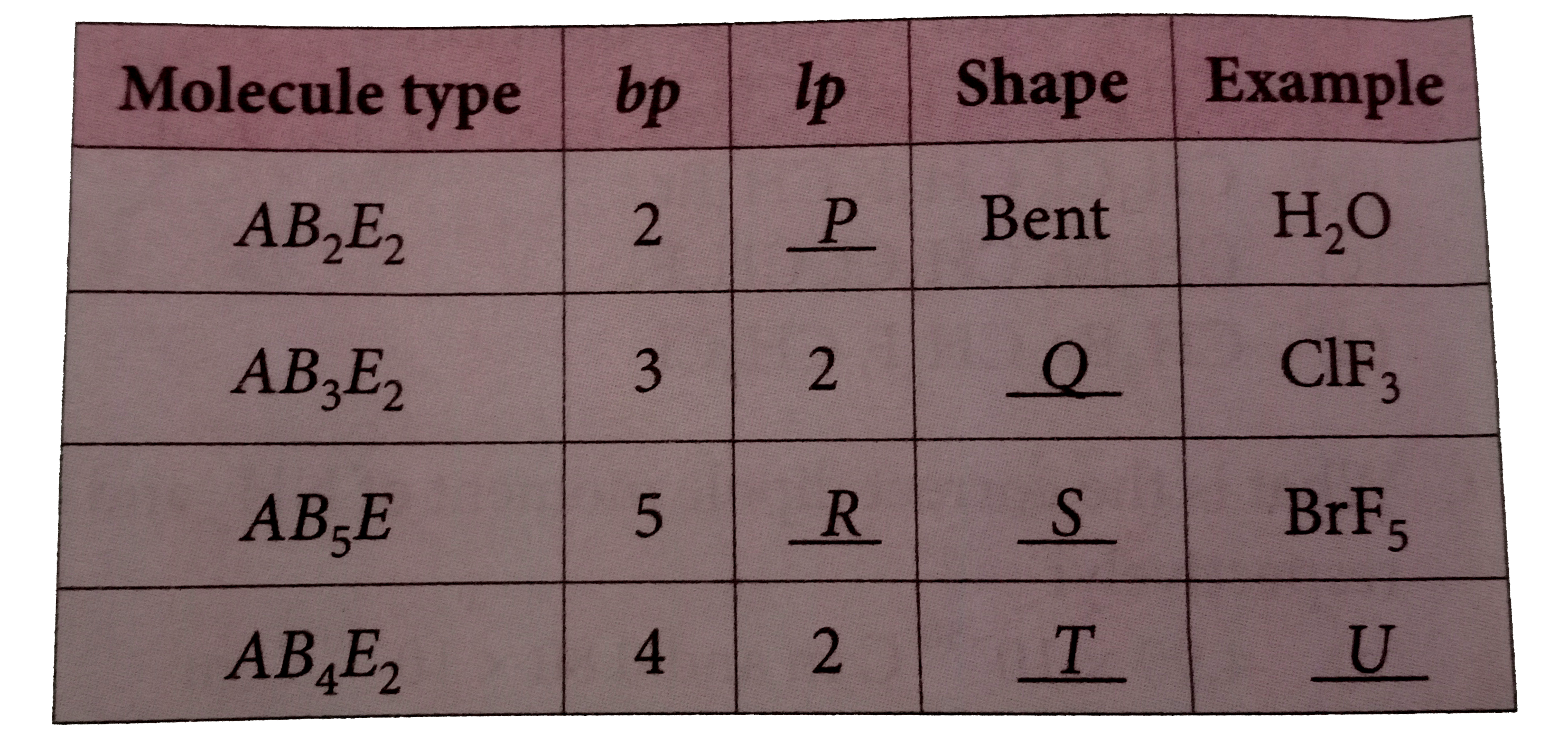Shape of molecule having 4-bond pair and one lone pair is :-
Trigonal bipyramidal
T-Shape
See saw
Square planar
The correct Answer is:C
To determine the shape of a molecule with 4 bond pairs and 1 lone pair, we can use the VSEPR (Valence Shell Electron Pair Repulsion) theory. Here’s a step-by-step solution:
Step 1: Identify the number of bond pairs and lone pairs
- We have 4 bond pairs and 1 lone pair in the molecule.
Step 2: Determine the total number of electron pairs
- Total electron pairs = Bond pairs + Lone pairs = 4 + 1 = 5.
Step 3: Determine the basic geometry
- With 5 electron pairs, the basic geometry is trigonal bipyramidal.
Step 4: Consider the effect of lone pairs
- In a trigonal bipyramidal arrangement, lone pairs occupy equatorial positions to minimize repulsion. Therefore, one of the equatorial positions will be occupied by the lone pair.
Step 5: Determine the molecular shape
- With 4 bond pairs and 1 lone pair, the resulting molecular shape is seesaw (also referred to as "K shape").
Conclusion
- The shape of the molecule having 4 bond pairs and 1 lone pair is seesaw.
---
- We have 4 bond pairs and 1 lone pair in the molecule.
- Total electron pairs = Bond pairs + Lone pairs = 4 + 1 = 5.
- With 5 electron pairs, the basic geometry is trigonal bipyramidal.
- In a trigonal bipyramidal arrangement, lone pairs occupy equatorial positions to minimize repulsion. Therefore, one of the equatorial positions will be occupied by the lone pair.
- With 4 bond pairs and 1 lone pair, the resulting molecular shape is seesaw (also referred to as "K shape").
- The shape of the molecule having 4 bond pairs and 1 lone pair is seesaw.
Topper's Solved these Questions
- INORGANIC CHEMISTRYBOOK - ALLENCHAPTER - INORGANIC CHEMISTRYEXERCISE - COORDINATION COMPOUNDS & d-BLOCK COMPOUNDS
109 Videos
- INORGANIC CHEMISTRYBOOK - ALLENCHAPTER - INORGANIC CHEMISTRYEXERCISE - COORDINATION COMPOUNDS & d-BLOCK COMPOUNDS (MATCH THE COLUMN)
2 Videos
- INORGANIC CHEMISTRYBOOK - ALLENCHAPTER - INORGANIC CHEMISTRYEXERCISE - PERIODIC TABLE (MATCH THE COLUMN TYPE QUESTIONS)
5 Videos
- HYDROGENBOOK - ALLENCHAPTER - HYDROGENEXERCISE - EXERCISE-5
17 Videos
- Ionic EquilibriumBOOK - ALLENCHAPTER - Ionic EquilibriumEXERCISE - All Questions
37 Videos
Similar Questions
Valence shell electron pair repusin theory (VSEPR) can be used
to perdict the approximate shape of molecules. Electrons in
bonds and in lone pairs can ve thought of as charge cloud that
repel one another and stay as far apart possible, thus causing molecules to assume specific shapes.
The repulsive interacions of electro paris decrease in the order :
Lone pair-lone pair > Lone pair -bond pair >Bond pair -bond
pair.
These replusions effect result in deviations from
idealized shapes and alternative in bond angles in molecules.
The species which has pyramidal shape is :
View SolutionValence shell electron pair repulsion theory (VSEPR) can be used to predict the approximate shape of molecules. Electrons in bonds and in lone pairs can be thought of as charge cloud that repel one another stay as far apart possible, thus causing molecules to assume specific shapes.
The repulsive interactions of electro pair is decrease in the order :
Lone pair-lone pair > Lone pair -bond pair > Bond pair -bond pair.
These repulsions effect result in deviations from idealized shapes and alteration in bond angles in molecules
Which of the following is linear ?
View Solution
Knowledge Check
Which of the following species contains three bond pairs and one lone pair around the central atom?
AH2OBBF3CNH−2DPCl3
According to VSEPR theory, the most probable shape of the molecule having 4 electrons pairs in the outer shell of the central atom is
View SolutionGiven below is the table showing shapes of some molecules having lone pairs of electrons. Fill up the blanks left in it.

View SolutionThe molecule which contain σ bonds, π bonds and lone pairs in 1 : 1 : 1 ratio :-
View SolutionWhich of the following molecules has more than one lone pair ?
View SolutionThe molecules which contain σ bond , π bond and lone pair 1:1:1 ratio :-
View SolutionWhich of the following species contains three bond pairs and one lone pair around the central atom?
View SolutionWhich of the following species contains three bond pair and one lone pair around the central atom ?
View Solution
